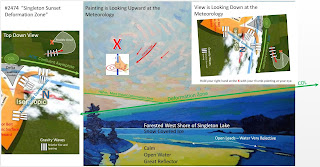It was a cold and sunny day in late January and I was walking the Singleton Sanctuary trails to see what else might be enjoying the winter day and leave their tracks as proof. The late afternoon sun was starting the illuminate the forest with the special light of the golden hour. The sparkle of light on the trees and in the ice and snow were what encouraged me to record this special moment.
The pioneers arrived in the 1800's and actually had a very sensible way to deal with waste. This is essentially an early type of simple composting toilet. The down side was that it was a hike from the cabin and there was no running water except in Jim Day Rapids. It was built on the shoulder of the ridge so it was not as prone to flooding - never a good thing if you have business to get done.
Privy - noun 1. a toilet located in a small shed outside a house or other building; an outhouse.
Privy is a very old word for a bathroom that dates from 1225 and the Old French word privé which means an "intimate friendly; a private place." The privacy was much better in the outhouse than inside on a chamber pot so that would make the privy much more attractive except during inclement weather. This Singleton privy was also referred to as an "earth closet" starting in 1863 since soil was used as a covering. This name is in contrast to the term water closet which was used for washrooms starting in 1763.

Thomas Crapper was an English businessman and plumber. Crapper held nine patents related to plumbing. Three of those patents were for improvements to the water closet such as the floating ballcock. He invented the U-bend plumbing trap in 1880 and improved on the previous S-bend . Manhole covers with Crapper's company's name on them can be found in Westminster Abbey. The company name also appeared on the pipes and traps of the water closet. Now you know where the word "crapper" comes from.
The seats of the Singleton Privy would be called a "thunderbox" if there was no roof covering . One can only guess why the word "thunder" might apply but I doubt if it was because of a sudden cumulonimbus cloud.
For
this and much more art, click on Pixels. Thank you.




























